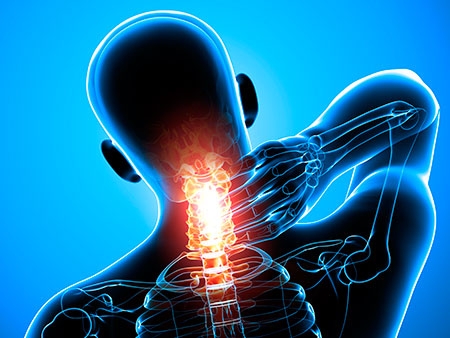‘Working from home’ has become one of the most loved and hated phrases of 2020. So much of the workforce has shifted from stereotypical office spaces to bedrooms, kitchens, dining rooms,patios, and any other square inch of house that can be converted into an acceptable working environment. As previously ergonomic workstations have transitioned to couches, some of our patients have mosied into our clinic with aches and pains caused by their new ‘normal.’
When we think about pathologies caused by poor ergonomic set-ups, low back pain is one of the first to come to mind. Poor posture for a long period of time day after day can cause all kinds of problems in the lumbar spine. From muscle strains to pinched nerves to disc problems to aggravation of existing arthritis, the back can wreak havoc on daily life when not treated well.Often times, tight hip flexors from prolonged sitting can contribute to pains in the low back. Tight hamstrings and glutes can also cause problems. These issues can often be avoided with a proper set up as well as frequent position changes and walks. In lieu of walking to the break room for a cup of coffee, do a lap around the house or up and down the flight of stairs.
In addition to low back pain, upper back and neck (or cervical) pain is common as well. Neck pain when working from home is typically caused by a computer screen being far lower than eye level; thus, causing the neck to crane for a better view. This posture can also lead to a more general forward head and forward shoulder posture, which can cause muscular imbalances in the upper body that in turn can pinch tendons or nerves and cause further problems.
Another common pathology caused by a poorly constructed workstation is carpal tunnel syndrome. When working on a computer, the keyboard and underlying surface should be situated so that the wrists remain in a neutral position. Oftentimes, keyboard placement forces wrists into an extended position when typing. Keyboard wrist supports exist that can be used to keep the wrists in a position that prevents irritation of the nerves that run through the wrist and consequently prevent the numbness and tingling that results from nerve compression.
So how can you prevent these problems? An ergonomically correct workstation should allow both feet to be flat on the floor when sitting at a desk. The keyboard should be situated in such away so the wrists maintain a neutral position while typing. Any screens should be adjusted so that the neck does not have to flex or extend in order to be viewed. A chair that provides some degree of support to the low back is preferable as well. Commonly used objects such as phones, staplers, and the beloved bottle of hand sanitizer should be placed in such a way as to avoid repetitive motions such as twisting. Headsets can be helpful as they allow the neck to remain in a neutral position rather than craned to one side or the other. As you may be able to tell from this description, sitting on the couch with a laptop in front of you is not ergonomic (as tempting as it sounds) and will likely result in developing one of these pathologies. These changes can make a world of difference and allow you to be more productive during your workday because you aren’t distracted by your aches and pains.
If COVID has found you working from home and developing discomfort, give us a call. We have spine specialists, upper body specialists, lower body specialists, and everything in between.
OAW has kept its doors open throughout the duration of the pandemic to cater to all of your orthopaedic needs. Give us a call at 262-303-5055 to schedule an appointment!

